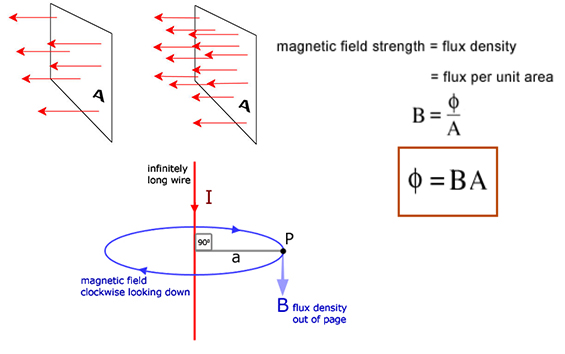Magnetic field strength is one of two ways that the intensity of a magnetic field can be expressed. Technically, a distinction is made between magnetic field strength H, measured in amperes per meter (A/m), and magnetic flux density B, measured in Newton-meters per ampere (Nm/A), also called Tesla (T).
Magnetic flux density (B) is the quantity of magnetic flux (Φ) per unit area (A), measured at right angles to the magnetic field.
The magnetic field can be visualized as magnetic field lines. The field strength corresponds to the density of the field lines. The total number of magnetic field lines penetrating an area is called the magnetic flux Density(D). The unit of the magnetic flux is the tesla meter squared (T · m2, also called the weber and symbolized Wb).
Magnetic flux density (B) is measured in Newton-meters per ampere (Nm/A), also called Tesla (T).

[…] Magnetic Flux density &Magnetic field intensity […]
ReplyDelete